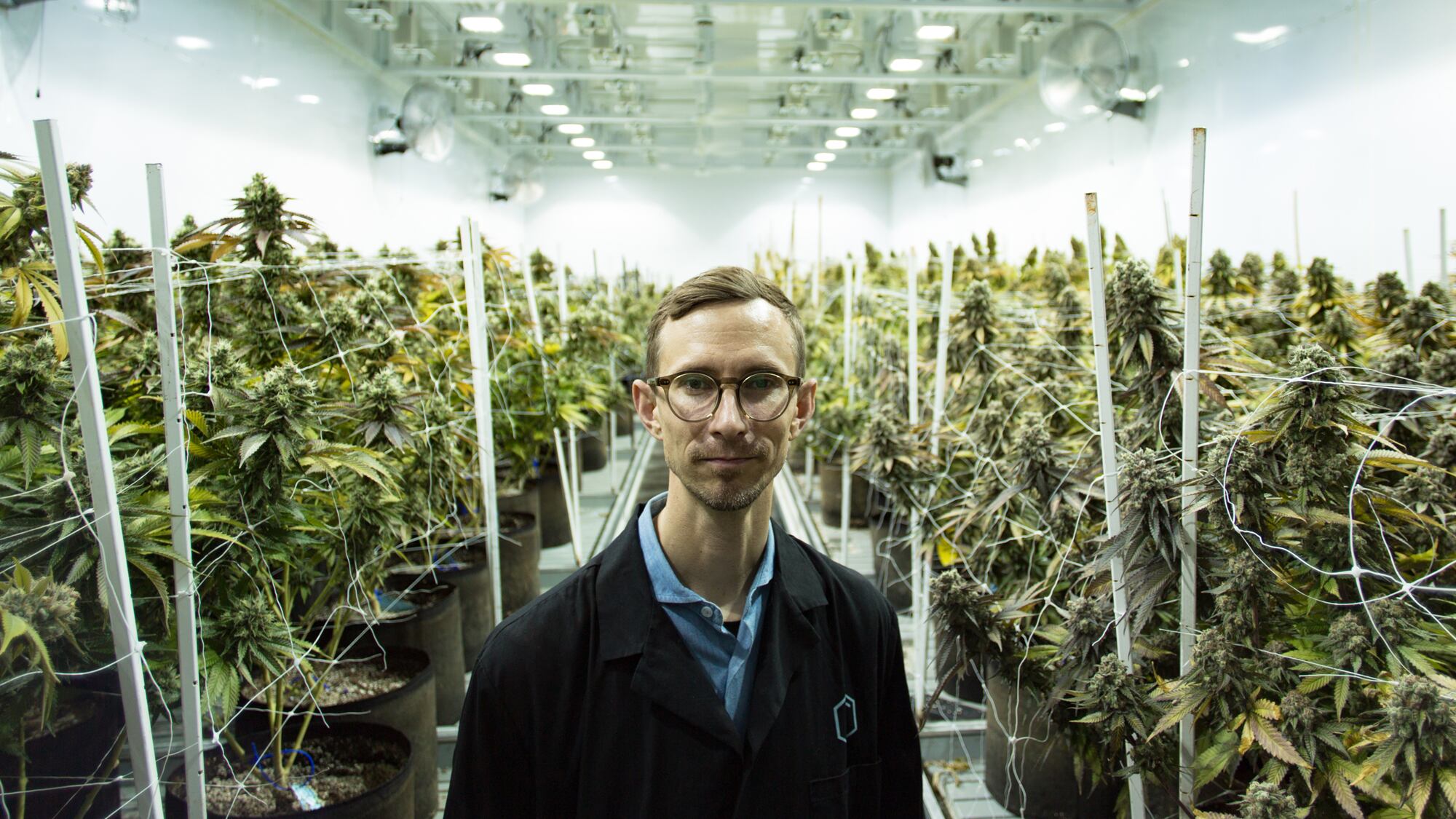With most cannabis, what you feel is what you get.
A nug of Blue Dream from one grower might make you feel energized, while another might help with your insomnia. If you're looking for a specific effect, especially a therapeutic one, you might be subject to a long process of trial and error, with no guarantee of consistency. And since cannabis was outlawed for so long, there's precious little high-level scientific research to help guide your decisions.
Portland's Jeremy Plumb is trying to change all that. He wants to help make cannabis every bit as reliable and predictable in its effects as ibuprofen or caffeine. Plumb, often cutely called the "Wizard of Weed" in stories by national outlets, is a ubiquitous presence in Portland weed. He's the co-founder of Farma dispensary, the WW-sponsored Cultivation Classic cannabis competition and the Open Cannabis Project, dedicated to documenting the cannabis genome.
But in June, Plumb inaugurated yet another role: director of production science at high-tech Portland-area grower Pruf Cultivar. At Pruf, Plumb is trying to use tightly controlled growing experiments to attain results that hadn't previously been possible: He wants to map out the genetic and environmental factors that make cannabis have specific therapeutic effects.
The problem Plumb is trying to overcome at Pruf is also the thing that makes cannabis so promising as a therapeutic drug: the almost unrivalled complexity of the plant. Even when amounts of THC and CBD are the same, the therapeutic and psychoactive effects of a given cannabis plant are greatly affected by a vast number of chemicals called cannabinoids and terpenes, which can vary wildly from plant to plant.
"The kind of diversity in this one species of plant is really extreme," he says. "It's like growing tomatoes and tobacco in the same facility."
Even if you give the same seed to four different growers, Plumb says you'll likely end up with four plants with radically different chemistries, which arise during growing because of differing light wavelength, temperature, humidity, and carbon-dioxide density in the air.
"The different chemistry will have pronounced effects. There will be subtle differences. These states are subjective in many cases, and human physiology is diverse," he says.
This variability also affects medical doctors' willingness to prescribe.
"If you talk to many doctors," says Plumb, "the key to being taken seriously is to have consistent attributes. So long as there is a huge range of effects, doctors don't want to make referrals. Leading hospice providers believe in the therapeutic benefits, but are concerned about the ways it can provoke anxiety, and have negative and harmful effects."
The key to cataloguing therapeutic benefits more consistently, Plumb believes, is the ability to conduct controlled, reproducible experiments in growing.
This isn't a new goal for Plumb—he began this work at a now-defunct farm called Newcleus Nurseries two years ago, and his Farma dispensaries test for individual terpenes rather than just display CBD and THC percentages. But at Newcleus, he didn't have the resources he has at Pruf.
"At Pruf, one of the great things is that we have controlled environments," he says. The team at Pruf can modulate temperature, light, humidity and other factors and record the effects on the chemotype of the plant. "I was the luckiest guy ever to find this team that had all kinds of other talents: operational capacity, technical capacity."
To demonstrate the potential benefits, Plumb points to soon-to-be-published results from a researcher named David "Dedi" Meiri at Technion Israel Institute of Technology. When using cannabis to treat autistic patients, says Plumb, Meiri suddenly noticed an uptick in negative side effects. It turned out they'd switched growers. Even though they were using the same strain, with the same THC and CBD amounts, the therapeutic results changed dramatically.
"The chemistry was the difference," Plumb says.
At Pruf, Plumb and his team hope to help pinpoint the mix of cannabinoids and terpenes that help bring about the desired therapeutic result. There's still a lot of ground to cover, but Plumb is optimistic about harnessing cannabis' medical potential.
"If we can nail this down, in controlled environments with many different [growing] chambers, we're really creating a revolutionary supply chain. Long-term quality-of-life improvement programs can begin," Plumb says. "In a time of commercial recreation, people have become jaded about medical cannabis. We're hoping to help the poor and the sick and the dying—not just the new, hip recreational customer."
